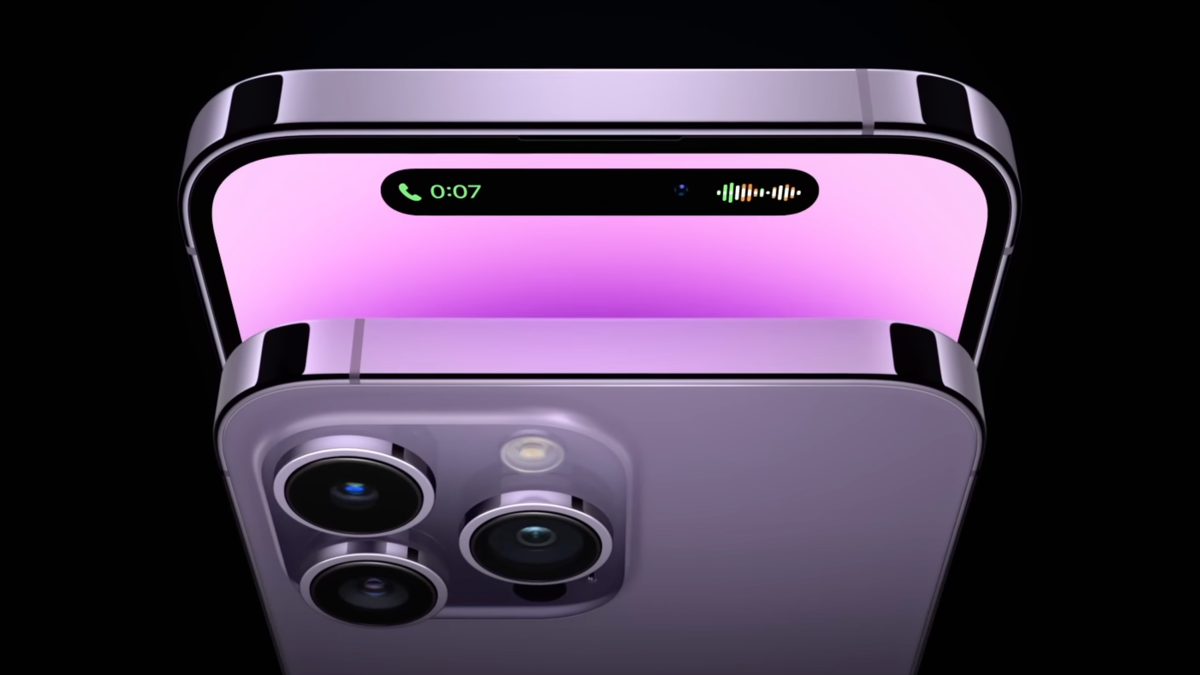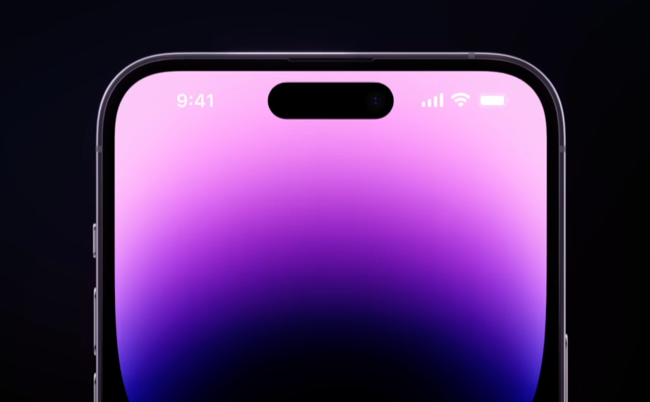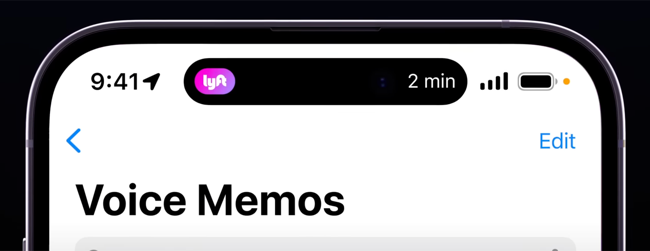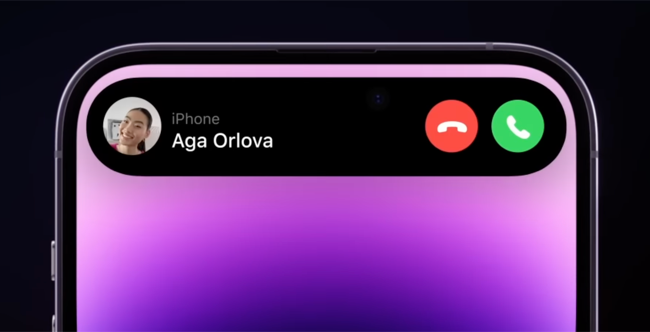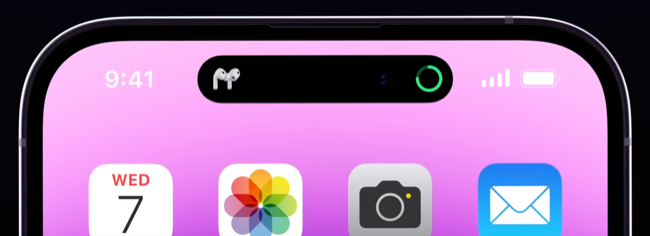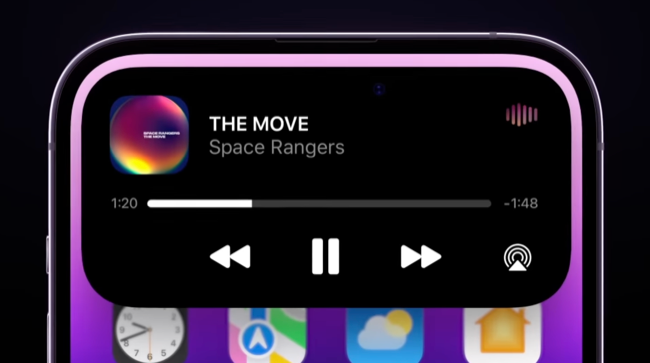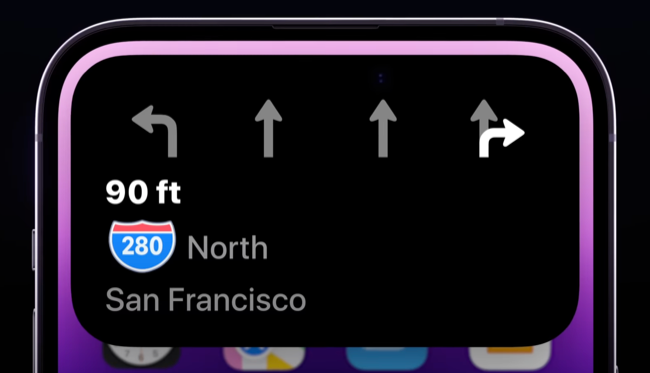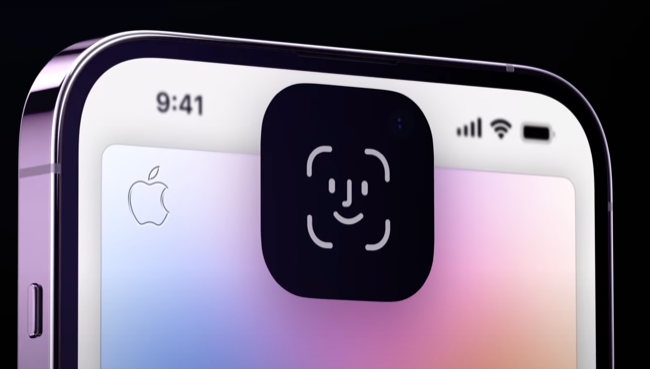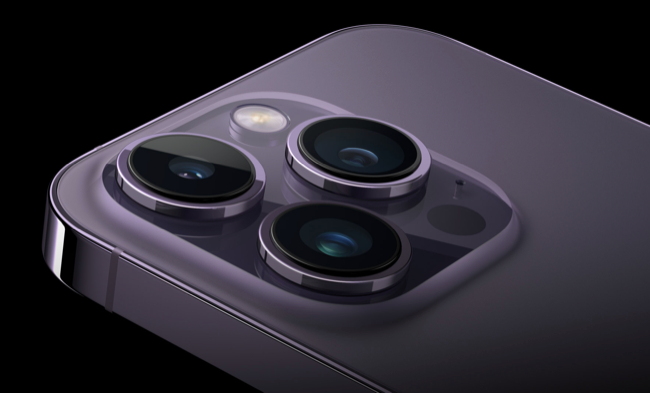Quick Links
First introduced with the iPhone X, the notch is one of Apple's more divisive design decisions. But with the iPhone 14 Pro, the cutout that houses Apple's front-facing camera and other sensors has received an overhaul that should make it less distracting.
Introducing the Dynamic Island
No groundbreaking iPhone feature would be complete without Apple's branding, and for this redesign, Apple went with the "Dynamic Island" moniker. Instead of a cutout that runs to the very top of the display, the new design uses a pill-shaped cutout in the iPhone 14 Pro's OLED panel into which a variety of components are now housed.
That includes the front-facing FaceTime camera for selfies and video calls and all the TrueDepth sensors required to make Face ID (Apple's facial recognition authentication system) and Portrait camera functions work.
To make this possible, Apple reduced the size of its TrueDepth sensors by 31% so that the cutout is as small as possible. The proximity sensor now detects incoming light (and whether your phone is pressed up against the side of your face) from behind the display, further saving space.
So far, this design doesn't sound hugely different from what you'll find on many competing Android smartphones, albeit with a few more sensors. But what makes Dynamic Island special is the way that Apple has used its software to make the design useful.
This is an advantage that Apple has over its rivals since it tightly controls the ecosystem. Only Apple's software can be installed on an iPhone, which allows the company to curate the user experience by developing hardware and software in unison.
See Alerts, Control iPhone Functions
The Dynamic Island is an area at the top of the iPhone 14 Pro that expands to include the cutout at the top of the screen, making the whole face of the iPhone design useful. The cutout itself is a "dead" space in that nothing can be displayed on top of it, but it's the way that this void has been incorporated into the design that makes the feature so noteworthy.
The area expands and contracts to display notifications and alerts, just like the notification area does on previous devices. The Dynamic Island can also be used to control various functions, like Now Playing controls. Incoming calls will be displayed with answer and reject buttons, and during a call you'll see the call indicator and a counter to show how long you've been talking.
If you use AirPods, you'll see the "AirPods connected" indicator here, too, along with the battery status on the other side of the cutout. The same is true of the Face ID that's displayed in iOS when you need to authenticate purchases and other apps. Turn-by-turn directions (both upcoming and those that demand your immediate attention) will appear here too.
Third-party apps can also make use of the area, allowing you to monitor the progress of background processes like hailing a ride share (Apple used Lyft as an example). Over time, more apps will take advantage of this area to show you live updates for sports teams, breaking news, and more.
While the design isn't exactly revolutionary, it's a clever way of making full use of the display with software accommodations. Apple made a big deal of going "all screen" with the iPhone X, and Dynamic Island further realizes that ambition.
Aside from the sheer utility of the feature, it also happens to look good too. Fluid animations are used to grow and shrink the area on cue. Since the iPhone 14 Pro uses an OLED display, the area immediately surrounding the notch appears deep black. This helps the sensor array "disappear" into the display (though it's not likely to be completely invisible, you'll see the FaceTime camera staring back at you if you peer close enough).
Apple's Big Plan for the Future?
Apple refers to the Dynamic Island as "the biggest change to the face of iPhone" since the iPhone X first appeared with its Face ID sensor array notch at the top of the screen. Now, every iPhone sold except for the iPhone SE has a notch in which the front-facing camera and TrueDepth sensors are housed.
Flagship, high-end devices always get bleeding-edge features first. When the iPhone X redesign arrived, Apple launched it alongside the iPhone 8. Now we have two tiers of iPhone, with the iPhone 14 Pro (and its supersized sibling the Pro Max) being the first to receive the Dynamic Island treatment.
With only two iPhone models using this feature, it could take a while for app developers to make full use of it. If the iPhone X redesign is anything to go by, it's probably safe to assume that Apple is planning on rolling out the feature to all new iPhone models eventually. We might even see a smaller sensor array in future revisions.
Whether this will arrive in time for next year's iPhone 15 remains to be seen, but the utility of the feature is hard to deny. It's a big step forward for multitasking on iPhone, allowing you to get useful information or control the features of one app while using another.
Above all, it should help quell some of the criticism Apple has faced about the notch, and even influence the design of future MacBook models since both the MacBook Air and MacBook Pro have a notch now.
Only on iPhone 14 Pro (For Now)
If you want the latest and greatest iPhone features, you'll need to shell out big for the latest and greatest model. For now, that's the $999 iPhone 14 Pro or $1099 iPhone 14 Pro Max.
This isn't the only advantage you'll get by spending big on Apple's flagship device, since the iPhone 14 Pro is also the only 2022 iPhone model to receive a new system-on-chip in the form of the A16 Bionic, plus the best camera system Apple has ever featured on an iPhone with a 48-megapixel main camera sensor.
The iPhone 14 Pro is arguably the better buy when compared to the iPhone 14 if you like to update your device often since it has some real advances that are absent on the standard model.

